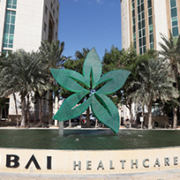Healthcare in the gulf – challenges remain in spite of investment boom
Since the early 1990s, the six member States of the Gulf Cooperation Council (Bahrain, Kuwait, Oman, Qatar, Saudi Arabia and the United Arab Emirates) have witnessed an unprecedented boom in the hospital and healthcare sector. Growth has been driven by numerous factors – from the provision of an increasing range of healthcare services to curbing the need for citizens to travel overseas for surgery.
While basic indicators such as life expectancy and infant mortality have shown dramatic gains, per capita health spending in the region is now on par with countries in eastern Europe. In spite of this, a host of new challenges have been emerging, above all due to an ageing population and lifestyle changes – as well as local skills shortages. In order to cope, Gulf hospitals have set up alliances and joint ventures with their top Western counterparts, especially from the US.
Over-running investment targets, ahead of time
In 2007, McKinsey & Co. forecast a massive, five-fold rise in Gulf healthcare spending by 2025, to $60 billion (


